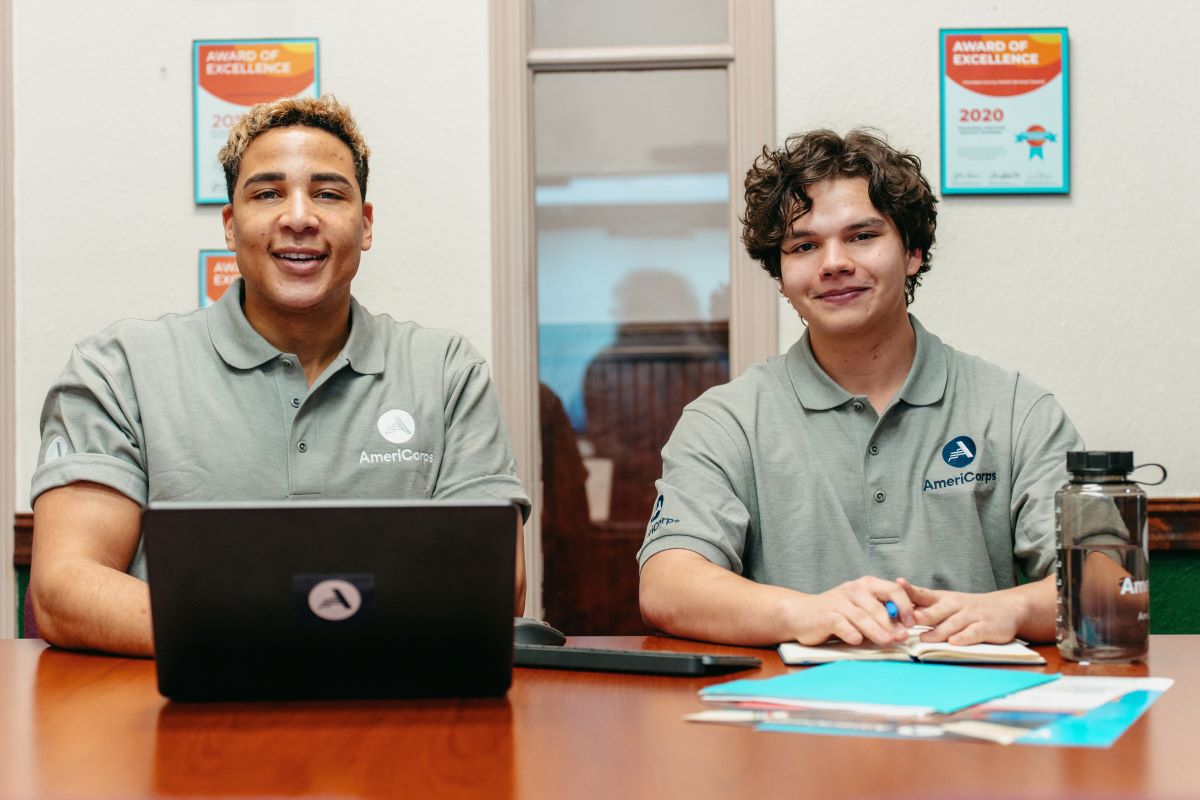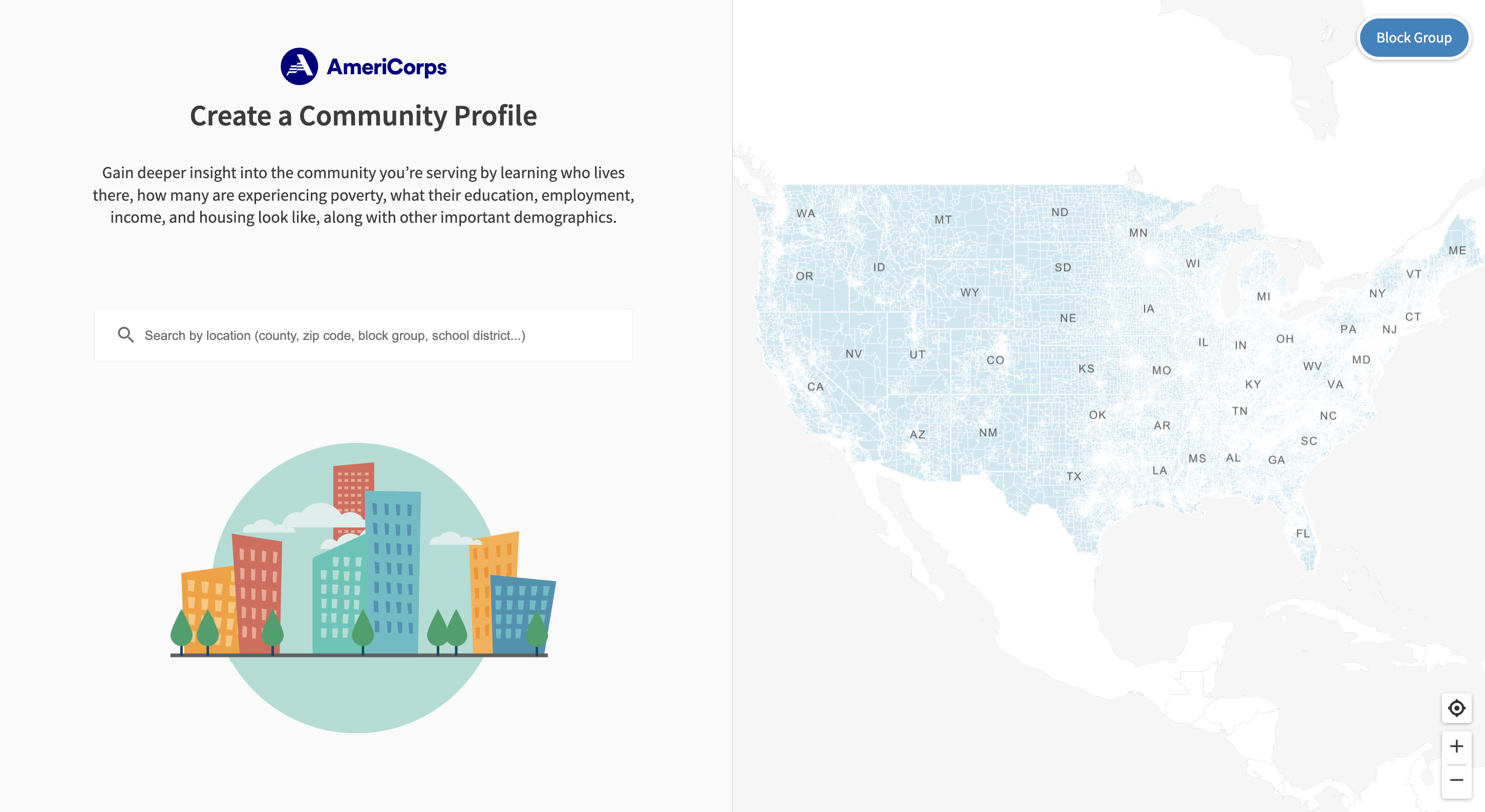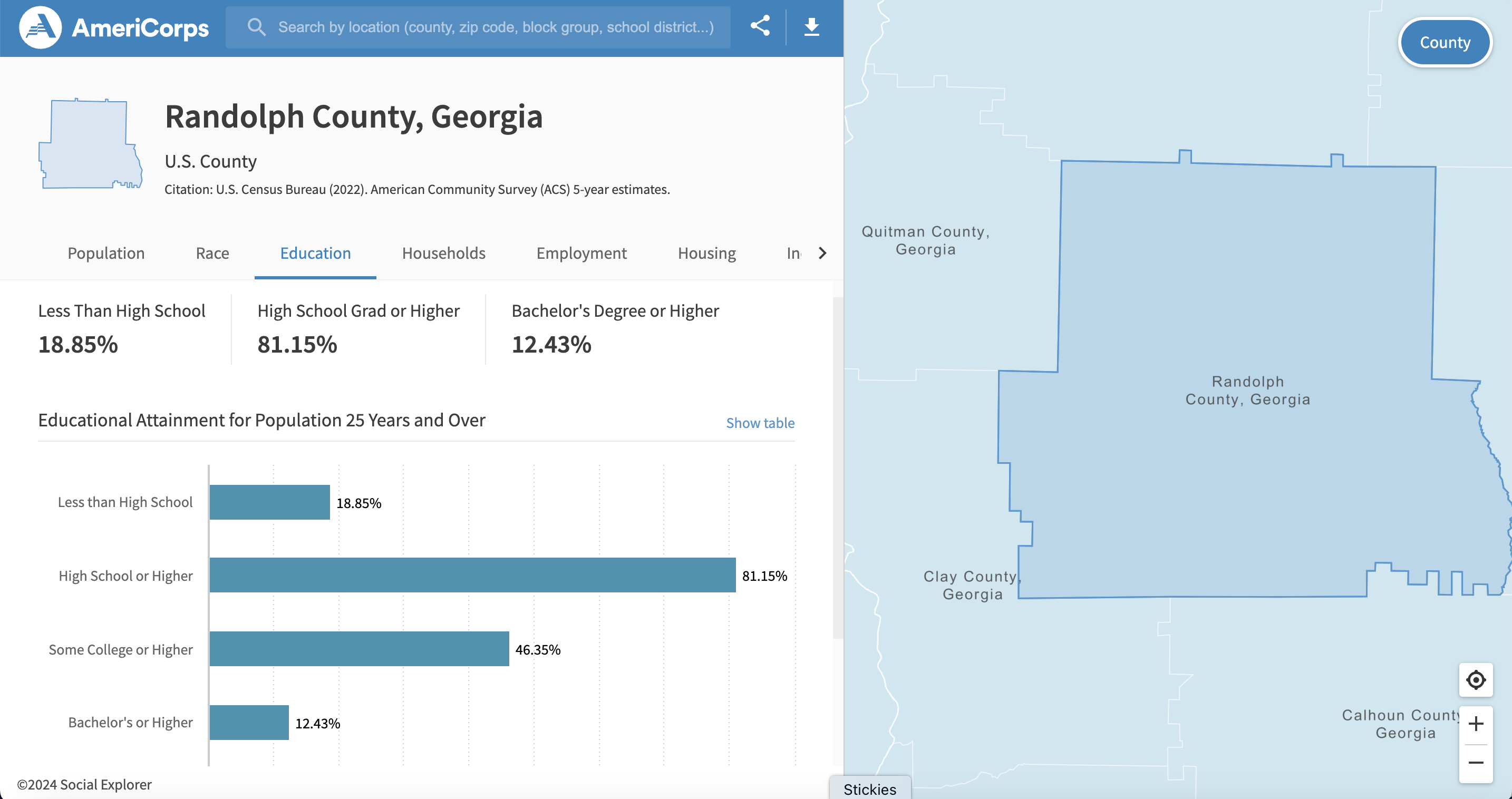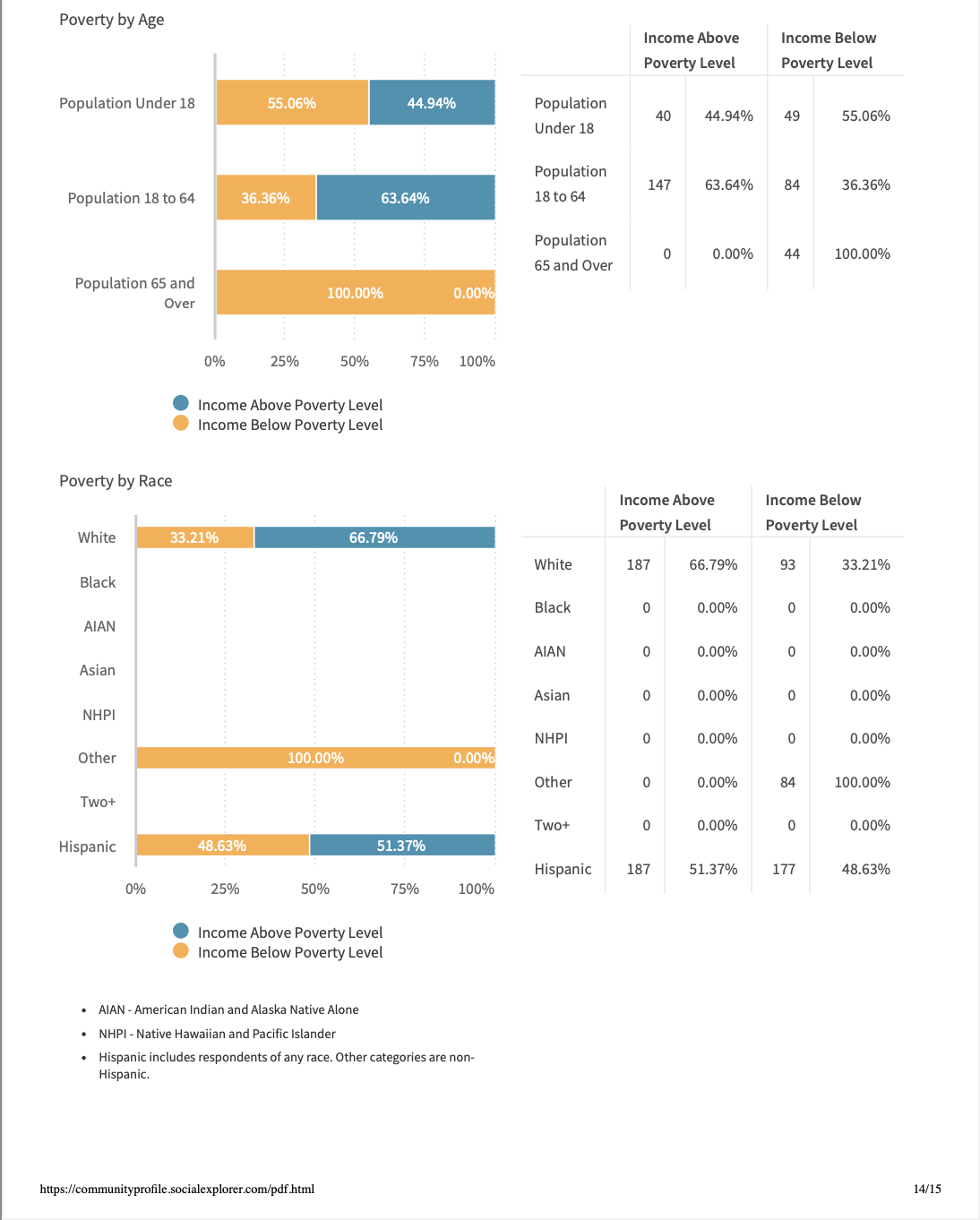Empowering AmeriCorps VISTA With Usable Data

At the heart of America’s fight against poverty is the AmeriCorps VISTA (Volunteers in Service to America), a community service program that has improved American lives for six decades. Established in 1964 as part of President Lyndon Johnson’s War on Poverty, this federal agency is on a mission to create sustainable solutions for poverty by empowering community service organizations across the nation to address local challenges.
To do so, dedicated VISTA volunteers immerse themselves in the communities they seek to aid. Working alongside residents and community leaders, VISTA members work full-time for a year within local nonprofits and public agencies, helping the community service organizations build programming, increase volunteerism, raise funds, and mobilize resources. “Our role is to empower communities by building capacity rather than providing a quick fix,” says Andy King, Senior Training Specialist at VISTA. “To create meaningful change, our members need a clear and verifiable understanding of community needs and assets.”
But for AmeriCorp VISTA volunteers to be truly effective, they need detailed data about the demographics and history of each community they serve so they can understand its challenges and develop truly effective solutions.
The Importance of Data for AmeriCorps VISTA
Today, non-profit data science is power. Access to comprehensive demographic data helps community service organizations clarify and target objectives.The more VISTA members can provide relevant data to the programs they support, the more effective their efforts can be.
In the past, obtaining demographic information meant navigating the labyrinthine Census Bureau website. This exercise was daunting for VISTA members without a background in data analysis. “We noticed many members weren’t utilizing the data resources available to them because it was just too complicated,” King recalls.
Moreover, the data points VISTA members need can and do change for a variety of reasons. For example, access to the Internet or the absence of home computers or cellphones as an indicator of poverty wasn’t relevant when the program started. Or, sometimes the change comes from the type of issue members are investigating. “For example, a housing organization that is … focused on educational attainment or food insecurity might want to look at different variables,” King explains.
VISTA’s need for accessible data that was current and included a variety of potentially relevant data points led them to Social Explorer. Drawing on Social Explorer’s expertise in population data and custom software development, VISTA found a partner that was able to create a tool tailored specifically to the needs of VISTA members and the community service organizations they serve.
An Easy-to-Use Community Data Application That Eliminates Hours of Work
AmeriCorps’ Community Profile tool, launched Fall 2024, delivers robust data visualizations to members with just a click. Trusted datasets on demographics, housing, income, and education are easily navigated within the application. Being able to isolate granular geographic data using block group and school district scales, among others, enables members to see what’s relevant to the communities they serve.

The Community Profile tool has become an invaluable asset for VISTA members and the community service organizations they partner with. This elegant data intelligence tool enables users — with any level of data literacy — to gain insights into the communities they serve. With the latest demographic datasets and intuitive visualizations, they can quickly access up-to-date data with just a few clicks. “Social Explorer developed a tool that makes data accessible and actionable,” says King. “Our members come from all walks of life, and not all of them are familiar with data. Social Explorer’s design allows them to quickly find the information they need to support their work. It’s a tool that gives them confidence and helps them succeed.”
VISTA members no longer have to pore through years of report survey spreadsheets to find data for a specific school district. Instead, they can click a link, choose a ZIP Code, and download a report. Whereas it used to take hours to determine which data best tells the story of a specific community’s needs, it now takes seconds. “With the Census Bureau or other data sites, you really have to do some work to get all the reports, download them, and try to make sense of them through charts and graphs. Having built-in charts and graphs is very helpful. Our members can just hand it to their supervisor, and it tells the story for you,” King states.

Using Data to Communicate with Key Organizational Stakeholders
The Community Profile platform’s ease of use, coupled with VISTA’s online classes, which walk members through the application — has really increased the organization’s ability to communicate effectively with data. “We’ve started to see a lot more of an uptick in use of it,” says King. “We have supervisors who say, ‘This VISTA member did a presentation to staff, and I was blown away. They had all these charts and numbers! Even our CEO didn’t know we had this kind of data.’ That was eye opening for us. Giving people access to this data and seeing how far they can go with it is exciting.”
In particular, the ability to use data to clearly communicate needs has had a dramatic effect on grant writing since grantmakers often require demographic data to assess the scope of a problem and whether a proposed solution is likely to have the desired impact. With data rendered in geographic visualizations and chart-driven visuals via the Community Profile tool, VISTA members are able to increase their chances of securing funding by creating proposals that feature solid, data-driven arguments for their programs.
“It’s a powerful persuader,” says King. “When it comes to grant writing, accurate and compelling data is often the difference between success and failure. Digestible content and trusted data energize grant proposals. This targeted approach impresses busy foundation program officers, instills confidence, and makes a persuasive case for support.”
Moreover, being able to keep track of key data points over time allows nonprofits to measure impact. After implementing a program, they can use changing metrics derived from a tool like Community Profile to track conditions and report on these results to stakeholders. In this way, data can give credibility to the work that’s being done and help build trust with the community, funders, and other partners.

The Importance of Detailed Data Points for AmeriCorps VISTA
In today’s nonprofit landscape, data isn’t just a nice-to-have — it’s a necessity. For community service organizations, quantifying community needs, conducting reporting service area analysis, and tracking progress is critical. Having access to data related to the areas where these organizations aim to make an impact—such as education rates, health metrics, housing conditions, income levels, and unemployment rates — is crucial for fulfilling these functions.
Data tools like AmeriCorps VISTA’s Community Profile tool bring together the specific datasets that community service organizations need most and organizes them at granular geographic levels that speak to local issues, which is crucial for creating accurate community profiles that are useful to the community-based organizations.
Enhancing the Pursuit of AmeriCorps’s Mission With Data
Making data more accessible, understandable, and actionable has become a cornerstone of AmeriCorps work. With the Community Profile tool, VISTA members are better equipped to tackle the root causes of poverty and create long-lasting, data-driven solutions for communities.
“We wanted to ensure VISTA members have a clear understanding of what poverty looks like and how it’s defined and measured,” King says. “We want them to understand all these different dimensions, such as education, race, income level, wealth, savings, and home ownership. Because all of those things factor into individual well-being — into people’s ability to survive or thrive in an economic environment.”
As AmeriCorps VISTA celebrates its 60th anniversary, the focus on data accessibility is a testament to its enduring commitment to sustainable solutions. With better tools, better data, and better training, VISTA can better realize its mission of empowering communities and fighting poverty.
